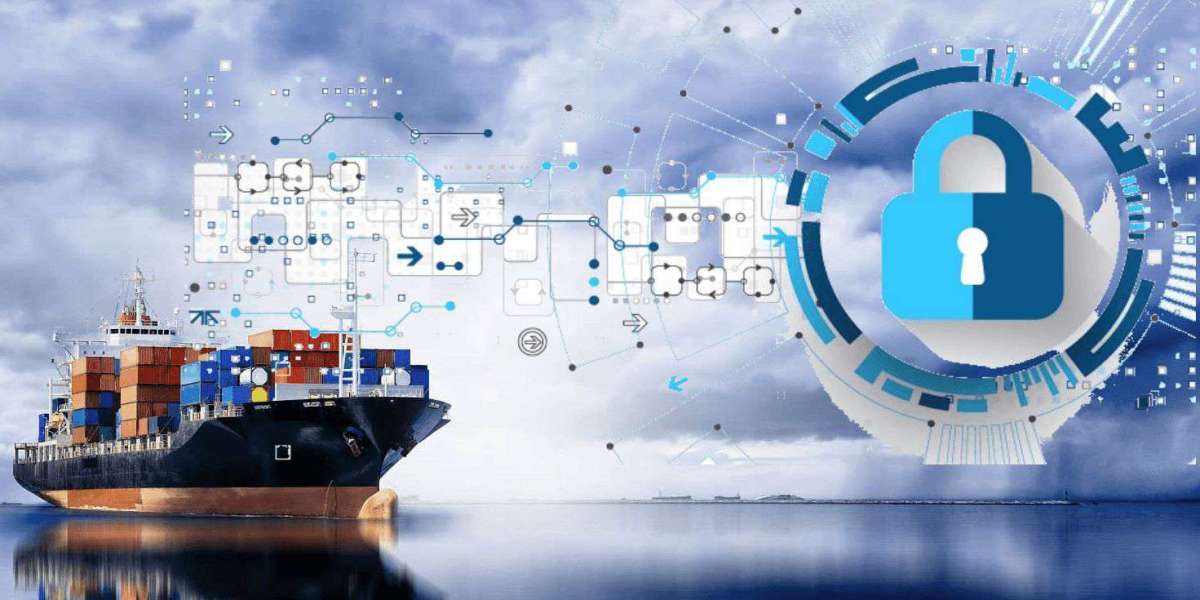The Digital Threat Landscape in Logistics
The logistics sector is the unseen backbone of global commerce. From manufacturing plants and warehouses to shipping ports and retail shelves, logistics operations ensure that goods move swiftly and efficiently across the supply chain. But as logistics goes digital—with cloud-based platforms, IoT-enabled fleets, automated warehouses, and AI-powered logistics software—the industry faces a rising wave of cybersecurity threats.
Cyberattacks on logistics can result in supply chain disruptions, stolen cargo data, port shutdowns, ransomware attacks on freight systems, and regulatory breaches. With critical national infrastructure and global trade routes at stake, cybersecurity is no longer optional—it’s strategic.
As the logistics sector evolves into a digitally integrated ecosystem, the Cybersecurity in Logistics Market is gaining significant traction. This article explores the market landscape, key technologies, drivers, challenges, and future outlook for cybersecurity in logistics.
1. Market Overview
Definition
Cybersecurity in logistics refers to the technologies, services, and strategies used to protect logistics systems, digital infrastructure, and supply chain data from cyber threats. It includes measures to secure:
- Transport Management Systems (TMS)
- Warehouse Management Systems (WMS)
- GPS and IoT fleet trackers
- Digital freight marketplaces
- Cloud-based SCM platforms
- Customs and border control data
- Robotics and autonomous vehicles
Click Here to Download a Free Sample Report
2. Why Logistics Needs Cybersecurity
Supply Chain Interconnectedness
With multiple players involved—freight forwarders, carriers, customs, warehouses, and retailers—the logistics network is complex and vulnerable. A single weak link can jeopardize the entire chain.
IoT Proliferation
Connected sensors in vehicles, containers, and cargo environments are essential for real-time tracking—but they also create attack surfaces for hackers.
Legacy Systems and Digital Transformation
Many logistics companies run a mix of old and new technologies. The integration of legacy systems with modern platforms often lacks robust security protocols.
Port and Maritime Vulnerability
Global seaports are increasingly automated. A breach in port logistics systems can paralyze entire trade routes, as seen in attacks on Maersk and COSCO.
High Ransomware Risks
Shipping and logistics firms have become frequent ransomware targets, facing multi-million-dollar losses and operational downtime.
3. Key Market Segments
By Security Type
- Network Security
- Endpoint Security
- Cloud Security
- Application Security
- Data Encryption
- Identity and Access Management (IAM)
By Deployment Mode
- On-Premise
- Cloud-Based
- Hybrid
By Solution
- Firewall and Intrusion Prevention Systems
- Security Information and Event Management (SIEM)
- Threat Intelligence
- Risk and Compliance Management
- Incident Response and Forensics
By Logistics Operation
- Freight Transportation (Road, Rail, Air, Sea)
- Warehousing and Distribution
- Fleet Management
- E-commerce Fulfillment
- Last-Mile Delivery
By End-User
- Logistics Providers
- Freight Forwarders
- Port Authorities
- Air Cargo Handlers
- Third-Party Logistics (3PL)
- Retail and E-commerce Companies
4. Key Market Drivers
Surge in Digital Logistics Adoption
Technologies like blockchain, cloud TMS/WMS, route optimization software, and RFID are increasing cyber vulnerability, requiring robust protective measures.
Rise in Cyberattacks on Critical Infrastructure
Cybercriminals are targeting logistics companies for espionage, extortion, or disruption of trade flows. Nation-state attacks on port systems are also on the rise.
Stringent Regulatory Compliance
New laws and standards like GDPR, CCPA, ISO/IEC 27001, NIST, and CISA require logistics companies to implement strong cybersecurity frameworks.
Data Explosion in Logistics
Big data analytics, digital twin simulations, and real-time shipment tracking require protection of massive volumes of operational and customer data.
Expansion of E-Commerce and Last-Mile Delivery
The boom in online shopping has led to more digital delivery operations and mobile device usage—heightening exposure to phishing and malware attacks.
5. Regional Insights
North America
- Home to major logistics providers and cyber firms
- Strong regulations (e.g., CISA, NIST framework)
- Investment in securing last-mile and autonomous logistics
Europe
- Emphasis on compliance (GDPR, NIS2 directive)
- Ports like Rotterdam and Hamburg deploying advanced cybersecurity
- High adoption of AI-driven threat monitoring
Asia-Pacific
- Fast-growing market driven by China, India, Japan, and Southeast Asia
- Vulnerability due to rapid digitization and weak security postures
- Government push for national cybersecurity frameworks
Latin America & Middle East
- Growing logistics hubs in Brazil, UAE, Saudi Arabia, and Mexico
- Need for port and customs cybersecurity enhancement
- Local demand for affordable cloud-based security solutions
6. Emerging Technologies in Logistics Cybersecurity
AI and Machine Learning
AI-enabled tools offer real-time threat detection, anomaly recognition, and predictive analytics to identify threats before they strike.
Blockchain for Secure Data Sharing
Decentralized ledgers ensure tamper-proof and traceable cargo documents, customs records, and transactions across the supply chain.
Zero Trust Architecture
Zero Trust assumes no implicit trust within the network—ensuring access controls are based on identity verification, location, and device state.
IoT and OT Security Platforms
Specialized platforms secure logistics IoT devices (e.g., smart sensors, autonomous trucks) and OT systems in warehouses and ports.
Cloud Security Posture Management (CSPM)
With logistics software moving to the cloud, CSPM tools detect misconfigurations, enforce compliance, and prevent unauthorized access.
7. Key Challenges in Cybersecurity for Logistics
Legacy Infrastructure
Many logistics firms rely on outdated ERP systems, SCADA controls, or RF devices that lack basic encryption or network defense capabilities.
Lack of Cyber Awareness
Drivers, port operators, and warehouse staff may not be trained in cybersecurity hygiene—creating a human risk vector.
Fragmented Supply Chains
Multiple stakeholders, geographies, and IT systems create integration challenges and blind spots in threat visibility.
Cost Constraints
Small and mid-sized logistics providers may lack the budget to invest in end-to-end security solutions.
Evolving Threat Landscape
Ransomware-as-a-Service, phishing kits, AI-driven malware, and zero-day exploits evolve faster than traditional defenses can respond.
8. Notable Cybersecurity Incidents in Logistics
Maersk (2017)
A NotPetya ransomware attack caused a global shutdown of Maersk’s shipping systems, resulting in losses of over $300 million.
TNT Express (FedEx, 2017)
Another NotPetya victim, TNT Express faced months-long disruption in tracking and invoicing systems.
Forward Air (2020)
A ransomware attack disrupted freight operations and led to data breaches in customer logistics documents.
These cases highlight how critical cybersecurity is—not just for IT, but for business continuity and reputation.
9. Leading Companies and Solution Providers
Cybersecurity Companies Serving Logistics
- IBM Security
- Palo Alto Networks
- Check Point Software
- Fortinet
- Cisco Systems
- Trend Micro
- CrowdStrike
- McAfee
- Darktrace
- FireEye (now Trellix)
Logistics Companies Investing in Cybersecurity
- DHL
- UPS
- Maersk
- DB Schenker
- Kuehne + Nagel
- XPO Logistics
- FedEx
- C.H. Robinson
These organizations are collaborating to build secure digital logistics ecosystems using threat intelligence, cloud protection, and policy automation.
10. Future Outlook and Opportunities
Security-as-a-Service for SMEs
Cloud-based, subscription cybersecurity tools tailored for small logistics operators will democratize access to protection.
5G-Enabled Logistics
As logistics leverages 5G for real-time control, cybersecurity for edge devices, networks, and low-latency apps will become critical.
Cyber-Physical System Protection
Automated warehouses and autonomous vehicles will need secure software stacks, firmware integrity checks, and intrusion response systems.
AI-Driven SOCs (Security Operation Centers)
Intelligent SOCs will monitor logistics infrastructure across geographies—identifying unusual behaviors and neutralizing threats autonomously.
Cyber Insurance and Risk Assessment
Insurers will develop tailored cyber insurance products for logistics firms, based on attack surfaces, past incidents, and compliance metrics.
11. Strategic Recommendations
For Logistics Companies
- Conduct cyber risk assessments of end-to-end supply chains
- Adopt Zero Trust principles and IAM best practices
- Educate workforce through cybersecurity awareness training
- Backup mission-critical data and implement disaster recovery plans
For Cybersecurity Vendors
- Develop industry-specific solutions tailored to logistics
- Provide managed detection and response (MDR) as-a-service
- Enable plug-and-play integrations with TMS/WMS platforms
For Policymakers
- Enforce minimum security standards for logistics operators
- Support public-private threat intelligence sharing
- Fund cybersecurity workforce development in transportation
Conclusion: Cybersecurity—The Keystone of Digital Logistics
The digital transformation of logistics is reshaping how the world moves goods, data, and capital. But with this evolution comes new vulnerabilities. Cybersecurity is no longer just about preventing data breaches—it’s about ensuring resilient, secure, and trusted supply chains in an increasingly uncertain world.
From ransomware to supply chain infiltration, the threats are real. But so are the solutions. With proactive investment in cybersecurity, logistics companies can gain competitive advantage, build customer trust, and ensure operational continuity across borders and technologies.
As we look ahead, cybersecurity will be the keystone of a truly smart, secure, and sustainable logistics ecosystem.






